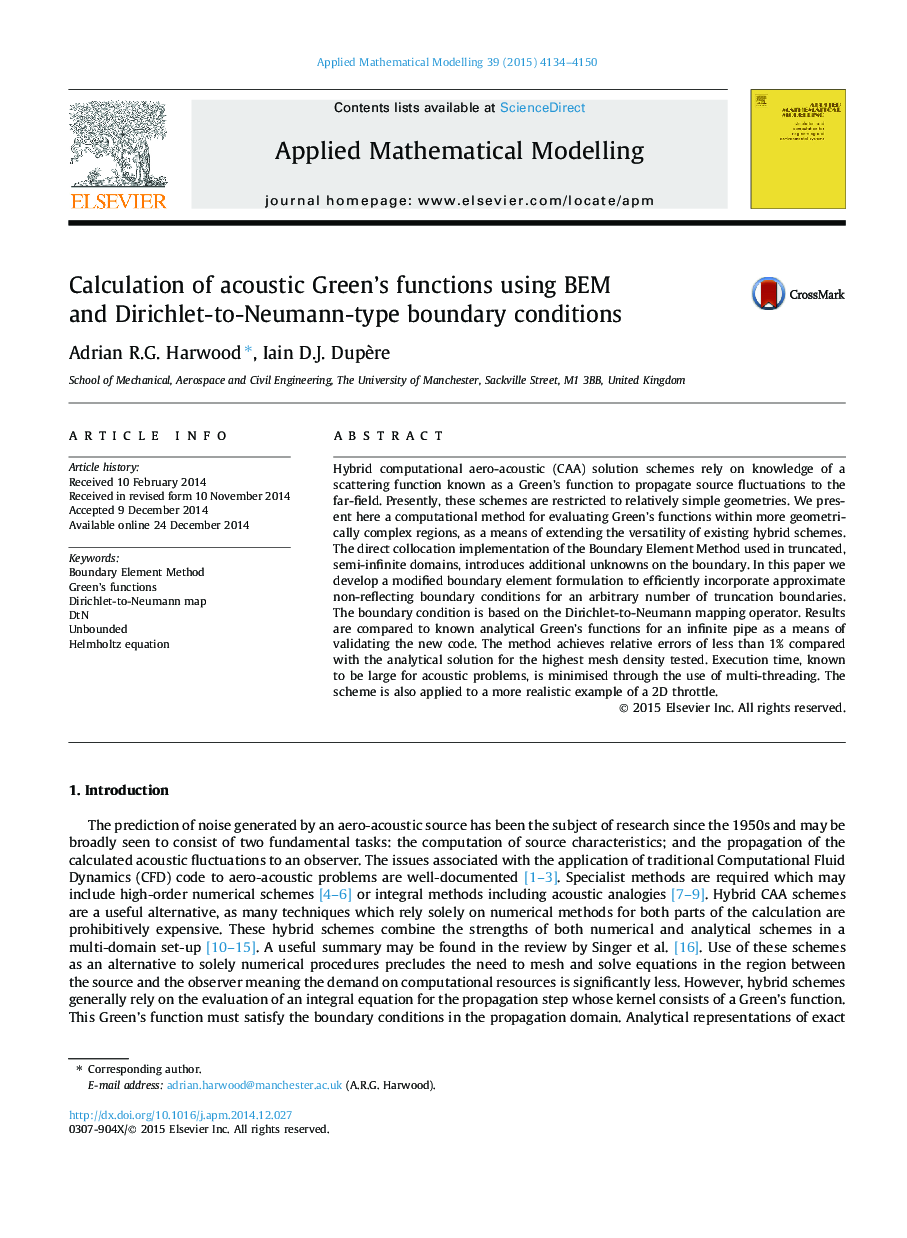| Article ID | Journal | Published Year | Pages | File Type |
|---|---|---|---|---|
| 1703328 | Applied Mathematical Modelling | 2015 | 17 Pages |
Hybrid computational aero-acoustic (CAA) solution schemes rely on knowledge of a scattering function known as a Green’s function to propagate source fluctuations to the far-field. Presently, these schemes are restricted to relatively simple geometries. We present here a computational method for evaluating Green’s functions within more geometrically complex regions, as a means of extending the versatility of existing hybrid schemes. The direct collocation implementation of the Boundary Element Method used in truncated, semi-infinite domains, introduces additional unknowns on the boundary. In this paper we develop a modified boundary element formulation to efficiently incorporate approximate non-reflecting boundary conditions for an arbitrary number of truncation boundaries. The boundary condition is based on the Dirichlet-to-Neumann mapping operator. Results are compared to known analytical Green’s functions for an infinite pipe as a means of validating the new code. The method achieves relative errors of less than 1% compared with the analytical solution for the highest mesh density tested. Execution time, known to be large for acoustic problems, is minimised through the use of multi-threading. The scheme is also applied to a more realistic example of a 2D throttle.
